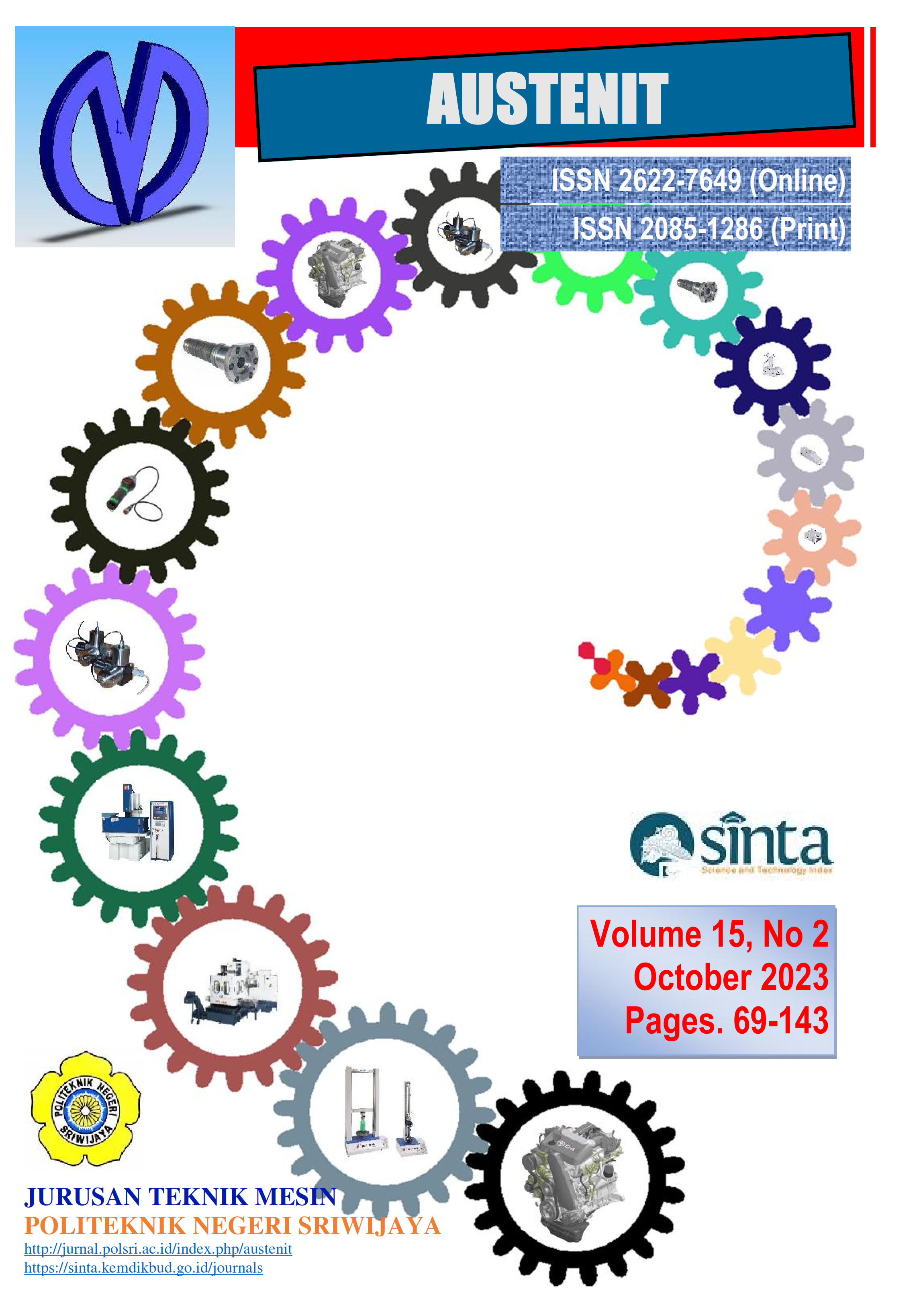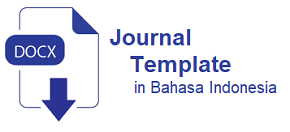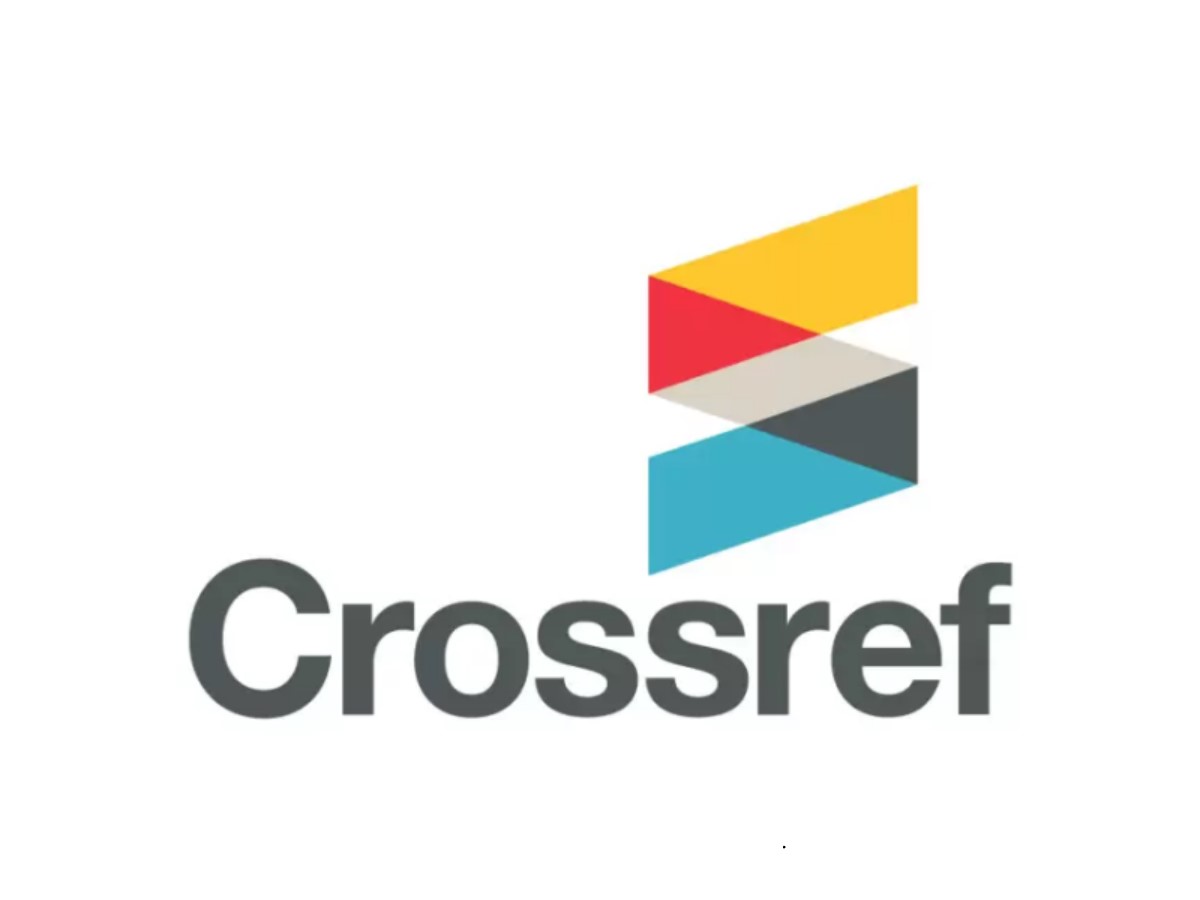DEVELOPMENT OF UNDERWATER ROV (REMOTELY OPERATED VEHICLE) SYSTEMS AND MECHANISM
DOI:
https://doi.org/10.53893/austenit.v15i2.6957Keywords:
Exploration of aquatic ecosystems, Remotely Operated Vehicles, Underwater robotsAbstract
Â
Remotely Operated Vehicle or abbreviated as ROV is an underwater explorer robot where the robot is controlled remotely by an operator using a remote control system. Water ecosystems certainly have various kinds of hazards that cause harm to divers, such as wild animals, waters contaminated with toxic waste, limited oxygen, and many other risks. Based on these problems, research was carried out, namely the Design and Development of Underwater ROV (Remotely Operated Vehicle) Mechanisms and Systems where the tool built is an underwater robot that uses 8 DC motors to be able to perform 12 types of movements under water. The final result obtained by the ROV is that it is able to perform all of these movements except for the right somersault and left somersault. The speed and direction of rotation of the motor is controlled by a device, namely the BTS7960 motor driver. This robot aims to measure pressure and temperature and capture images underwater to a depth of 4m. Pressure and temperature measurements were made using a BMP180 pressure sensor and a DS18B20 temperature sensor where the measurement results will be displayed on a 16x2 LCD. Based on the test results, the pressure sensor has an error rate of 3.6% and a temperature sensor of 0.34%. Images and videos are captured by a device, namely a CCTV camera where the device is connected to a laptop device as a monitor. The test produced results in the form of images and videos that were quite clear.
Downloads
References
Aldino, Y., Sulistiyanti, S.R., & Komarudin, M. (2018). Rancang Bangun Perangkat Kendali Rov Berbasis Joypad Dan Aplikasi Pemantauan Kondisi Bawah Air Berbasis Video Streaming. Jurnal Rekayasa dan Teknologi Elektro, Vol. 12, No. 3. https://doi.org/10.23960/elc.v12n3.2091
Abidin, Z., Chrismianto, D., & Trimulyono, A. (2015). Analisa Underwater Thruster Pada Remotely Operated Vehiicle (Rov) Dengan Metode Cfd. Jurnal Teknik Perkapalan Universitas Diponegoro, Vol. 3, No. 2. https://ejournal3.undip.ac.id/index.php/naval/article/view/8594
Anam, H., & Setiawan, J.D. (2015). Simulasi Dan Analisa Dinamika Remotely Operated Vehicle(Rov). Jurnal Teknik Mesin Universitas Diponegoro, Vol. 3, No. 1, pp.1-7.https://ejournal3.undip.ac.id/index.php/jtm/article/view/8689
Arief, Hollanda. (2012). RANCANG BANGUN MINI REMOTELY OPERATED VEHICLE (ROV) UNTUK EKSPLORASI BAWAH AIR. Laporan tesis Departemen Ilmu dan Teknologi Kelautan, Fakultas Perikanan dan Ilmu Kelautan, Institut Pertanian Bogor, Bogor, Indonesia.
Bluerobotics.com.(2019). Rov and Marine Robotics System and Components. https://bluerobotics.com/ (diakses 25 Juli 2020).
HB, I. (2011). Perbaikan Kualitas Coran Propeller Pada Industri Kecil Dengan Metode Taguchi. AUSTENIT, Vol. 3, No. 1. https://doi.org/10.5281/zenodo.4544225
Husin, Z., Firmansyah, B., Lazuardi, E., Prasetyo, A., & Nurhasanah, N. (2014). Studi Awal Perancangan Prototipe Remotely Operated Vehicle (Rov). MICROTIGA Electrical Engineering Journal Sriwijaya University, Vol. 1, No. 2. https://ejournal3.undip.ac.id/index.php/jtm/article/view/8689
llang, Shanty. (2017). ANALISIS DESAIN AWAL RANCANG BANGUN REMOTELY OPERATED VEHICLE (ROV). Laporan tesis Program Studi Teknik Perkapalan, Fakultas Teknologi Kelautan, Universitas Darma Persada, Jakarta, Indonesia.
Junan, Y., Poekoel, V.C., & Putro, M.D. (2018). Rancang Bangun Robot Bawah Air. Jurnal Teknik Elektro dan Komputer (JTEK), Vol. 7, No. 1. https://ejournal.unsrat.ac.id/v3/index.php/elekdankom/article/view/19139
Kurniawan, Robby. (2017). RANCANG BANGUN ROV (REMOTELY OPERATED VEHICLE) MENGGUNAKAN MOTOR AC SINGLE- PHASE. Laporan tesis jurusan Departemen Teknik Fisika, Fakultas Teknologi Industri, Institut Teknologi Sepuluh Nopember, Surabaya, Indonesia. http://repository.its.ac.id/id/eprint/45909
Marzuarman, M., Faizi, M.N., & Stephan, S. (2020). Rancang Bangun ROV (Remotely Operated Vehicle) Untuk Mengukur Kedalaman Air Berbasis Sensor MS5803-14BA. ELKHA Jurnal Teknik Elekro Universitas Tanjungpura, Vol. 12, No. 1, pp.19-25. http://dx.doi.org/10.26418/elkha.v12i1.39833
Mulyana, E., Adiningsih, N.U., & Fauzi, C.A. (2016). Rancang Bangun Robot Bawah Air Menggunakan Sistem Ballast Berbasis Rov (Remotely Operated Vehicle) Dengan Frekuensi 433 Mhz. Jurnal Telekomunikasi, Elektronika, Komputasi dan Kontrol TELKA, Vol. 2, No. 2. https://doi.org/10.15575/telka.v2n2.126-137
Pratama, R.A.,& Taufiqurrahman, M. (2018). Monitoring Suhu, Kadar PH, Dan Tingkat Salinitas Menggunakan Wahana Remotely Operated Vehicle (ROV) Sebagai Sarana Observasi Bawah Air. Jurnal Teknik Elektro CYCLOTRON, Vol. 1, No. 2. http://dx.doi.org/10.30651/cl.v1i2.1809
Rahmanto, A.I., Triwiatno, A., & Setiyono, B. (2015). Perancangan Stabilisasi Sudut Orientasi Pitch Pada Remotely Operated Vehicle (Rov) Dengan Metode Kontrol Proporsional Integral Derivatif. Jurnal Ilmiah Teknik Elektro TRANSIENT, Vol. 4, No. 3, pp.450-456. https://doi.org/10.14710/transient.v4i3.450-456
Septian, R.A., Rahmania, A., Nugraha, M.I., & Yudhi, Y. (2017). Remotely Operated Vehicle (ROV) untuk Eksplorasi Bawah Air di Lingkungan Industri Perkapalan. Jurnal Teknologi Manufaktur Manutech, Vol. 9, No. 1. https://doi.org/10.33504/manutech.v9i02.41
Siproni, S., Rasid, M., Seprianto, D., & Yahya. Y. (2018). Pengaruh Proses Pengecoran Terhadap Sifat-Sifat Mekanis Pada Baling-Baling Perahu Motor. AUSTENIT, Vol. 10, No. 1. https://doi.org/10.5281/zenodo.4547642
Susianti, E., Syahputra, N.A., Wibowo, A.U., & Maria, P.S. (2021). Rancang Bangun Robot Observasi Bawah Air – ROV (Remotely Operated Vehicle) menggunakan Arduino UNO. Jurnal Politeknik Caltex Riau ELEMENTER, Vol. 7, No. 2. https://doi.org/10.35143/elementer.v7i2.5207
Wijaya, M.F.R., Kurniantoro, H.L., & Media’s, E. (2016). Robot ROV Underwater Berbasis Mikrokontroler. AUTOCRACY:Jurnal Otomasi, Kendali, dan Aplikasi Industri, Vol. 3, No. 2. https://journal.unj.ac.id/unj/index.php/autocracy/article/view/6869
Zaman, M.B., & Taufiqurrahman, M. (2018). Rancang Bangun Sistem Kontrol Dan Pemantau ROV (Remotely Operated Vehicles) Berbasis Android. Jurnal Teknik Elekro dan Komputer TRIAC, Vol. 5, No. 1. https://doi.org/10.21107/triac.v5i1.3833
Downloads
Published
How to Cite
Issue
Section
License
Copyright (c) 2023 Authors and Publisher

This work is licensed under a Creative Commons Attribution-ShareAlike 4.0 International License.
The Authors submitting a manuscript do so on the understanding that if accepted for publication, Authors retain copyright and grant the AUSTENIT right of first publication with the work simultaneously licensed under a Creative Commons Attribution-ShareAlike License that allows others to share the work with an acknowledgment of the work's authorship and initial publication in this journal.
AUSTENIT, the Editors and the Advisory International Editorial Board make every effort to ensure that no wrong or misleading data, opinions or statements be published in the journal. In any way, the contents of the articles and advertisements published in AUSTENIT are the sole responsibility of their respective authors and advertisers.















